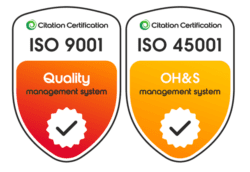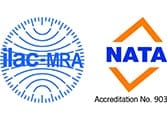Non-Destructive Testing (NDT) evaluates a range of physical and functional properties of a test subject, be it a component or a unit of equipment
Whether required for certification, evaluation or peace of mind, testing is a fundamental process that ensures your equipment can be used safely and is fit for purpose.
Materials, components and assembled products can all be put through either Destructive Testing (DT) or Non-Destructive Testing (NDT), or both.
Reliance Hexham is NATA accredited to offer a range of both DT and NDT methods that will determine the specimen’s safety and spot any weaknesses in the products supplied.
Non-Destructive Testing and its Applications
Non-Destructive Testing (NDT) evaluates a range of physical and functional properties of a test subject, be it a component or a unit of equipment. As the name suggests, in the process of testing, NDT does not permanently impact the component’s fitness to work. This type of testing is, therefore, suitable to mass-produced goods and one-of-a-kind pieces of equipment alike.
Industry applications for NDT span from mining to manufacturing, including any industry that relies on lifting heavy loads as part of their daily operations, such as crane and forklift fleet companies.
The frequency of testing is often mandated by Australian Standards, as well as State and Commonwealth governments, which may require that a current certificate from an accredited facility is obtained; the rate of use and risk to human life should also be taken into account when scheduling equipment testing intervals.
Depending on the application, the testing frequency can range from 6 months to several years. Another factor that might not immediately spring to mind, but carries a possibly conspicuous price, is production downtime.
Time is money for all our customers, and the lead-times associated with having a damaged piece of equipment replaced can be lengthy.
Failure to properly test materials, components and equipment can lead to severe financial and legal repercussions. On the financial side, downtime cost can well run into the millions AUD per day due to critical equipment becoming inoperative.
On the legal front, non-compliance with testing requirements can result in economic penalties to the company and, in extreme cases, even personal liability. In Australia, mine companies are regularly audited by the Mines Department with the aim to ensure safe working standards for the miners.
For instance, the required safety factor for most mining equipment is 10, meaning that the breaking load should be ten times greater than the usual working load. We call this over-engineering for safety. Wherever equipment failure is liable of causing potentially costly consequences, testing should never be omitted.
Process for Non-Destructive Testing
Reliance Hexham is accredited by the NATA, National Association of Testing Authorities, to carry out and issue certification for the following types of Non-Destructive Testing in accordance with our scope of accreditation:
We also offer other types of NDT not covered by our NATA accreditation but are supported by our certified quality management system:
We also carry out a range of Destructive-type tests which you can read about here.
Accurate & Reliable
Testing is conducted at Reliance Hexham’s premises, as well as on site in some cases, and our experienced and certified personnel use advanced testing and precision equipment to ensure the maximum reliability of our results.
Our team will be able to provide dedicated advice for your specific application and requirements, and is always at your disposal for consultations or quotation requests.











